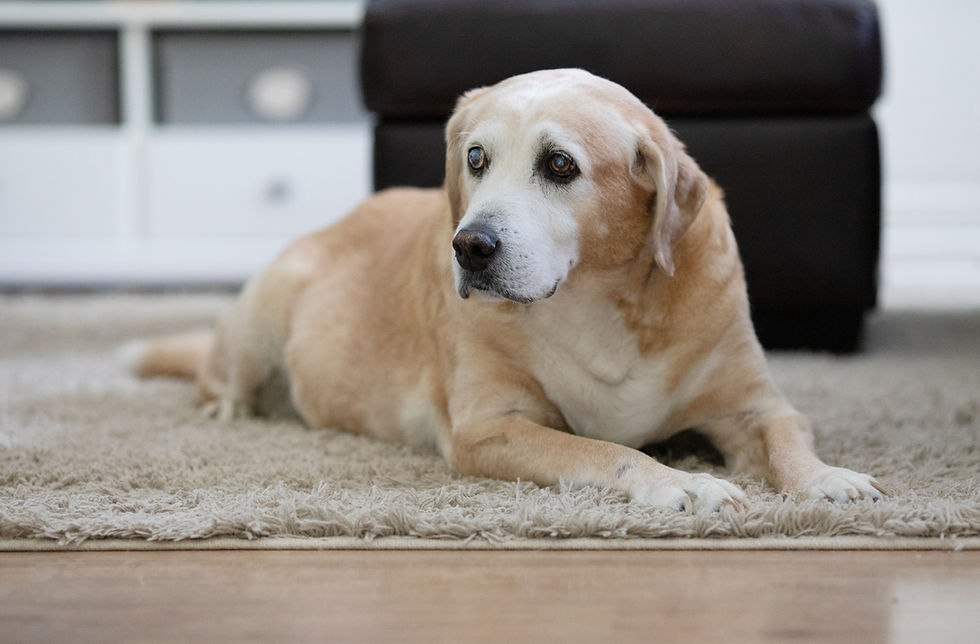What It Takes to Own a Senior Dog
- River Valley Gateway

- Dec 21, 2022
- 2 min read
Just like humans, dogs experience aging and undergo a series of changes as they age. These changes are just as strange to your dog as they are to you. You'll have to keep an eye out for these changes and help your dog deal with them.

What are the signs that your dog is aging?
As your dog gets older, there are several signs you will notice, and they include:
The dog starts getting stiff
When you notice that your dog is starting to have stiff joints, it's a sign that it is starting to get old. Although stiffness could be a symptom of other conditions like arthritis, it is usually common in dogs above eight years.
Ensure to take your dog to a vet once you notice stiffness and follow the prescriptions to ensure your dog is comfortable and healthy while aging.
Cloudy eyes and loss of vision
Aging in dogs is also followed by a condition called nuclear sclerosis, which is characterized by cloudy eyes. This condition resembles cataracts but is more common in older dogs. It also leads to a gradual loss of vision. However, your dog would still be able to see for a long time, even after being diagnosed with nuclear sclerosis.
Weight fluctuation
As dogs start to age, their metabolic rate slows down and leads to weight gain. Also, conditions like arthritis that reduce the dog’s ability to move around allow them to gain some weight. On the other hand, some dogs suffer from poor appetite when aging and may have difficulty with digestion leading to weight loss.
Graying
If you have a dark-coated dog, you might begin to notice graying, especially around the muzzle, the neck, and behind the legs. Graying usually occurs around the seventh and eighth year but can also be noticed in older dogs.
Memory loss
Aging dogs also suffer a condition known as canine dementia. The condition, also called Canine Cognitive Dysfunction (CCD), is common in about 10% of dogs above eight years. Some symptoms of CCD include behavioral changes, anxiety, disrupted sleep-wake cycle, and memory loss.
How to take care of senior dogs
Here are some simple tips for taking care of your senior dog and keeping it older:
Keep them active
As your dog ages, its energy level reduces alongside joint pains caused by arthritis. These factors tend to make the dog dormant as they begin to spend more time lying down than moving around. You must ensure your dog remains active by taking it on walks and playing games with it. It is okay to slow down so that the dog is comfortable.
Visit a vet
Another key tip is to visit a veterinary doctor to get your dog checked and run a series of tests to ensure that your dog is healthy or help you diagnose any problems early and treat them appropriately.
Make appropriate changes to the surrounding
As your dog ages, it's best to make necessary changes to the living environment to make movement easier for them. You can also get an orthopedic dog bed to help with joint pains.
You can reach out to us for more tips on caring for your senior dog or if you think its quality of life is on the decline.







